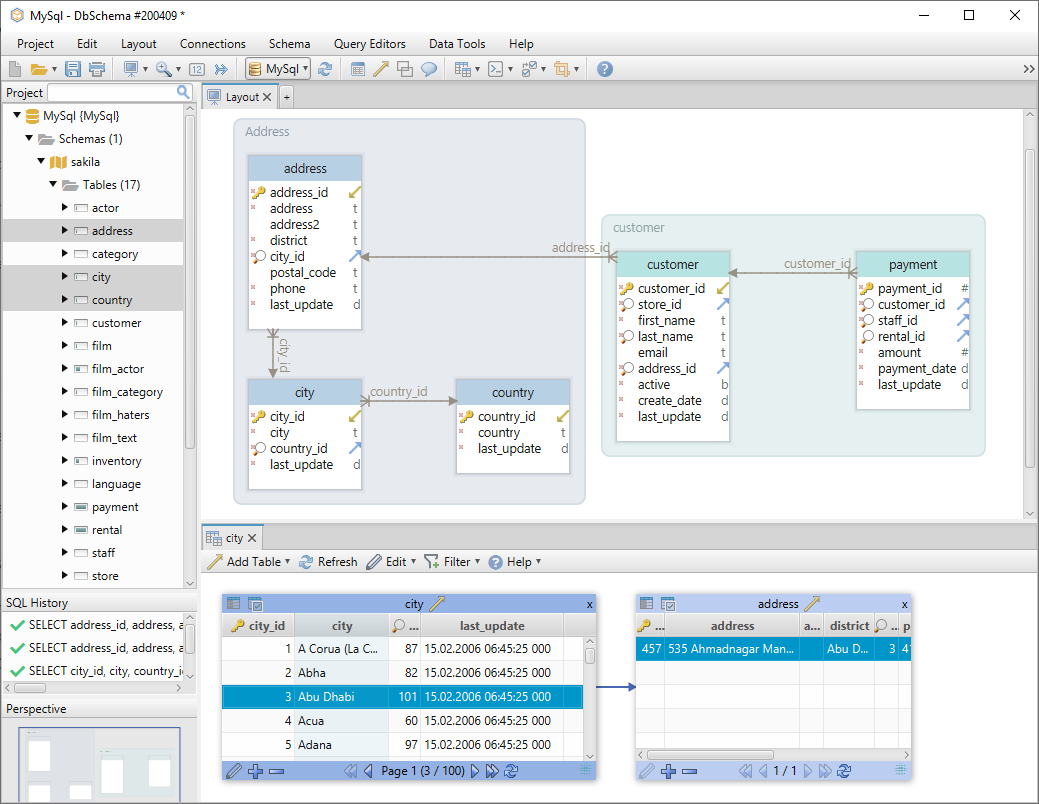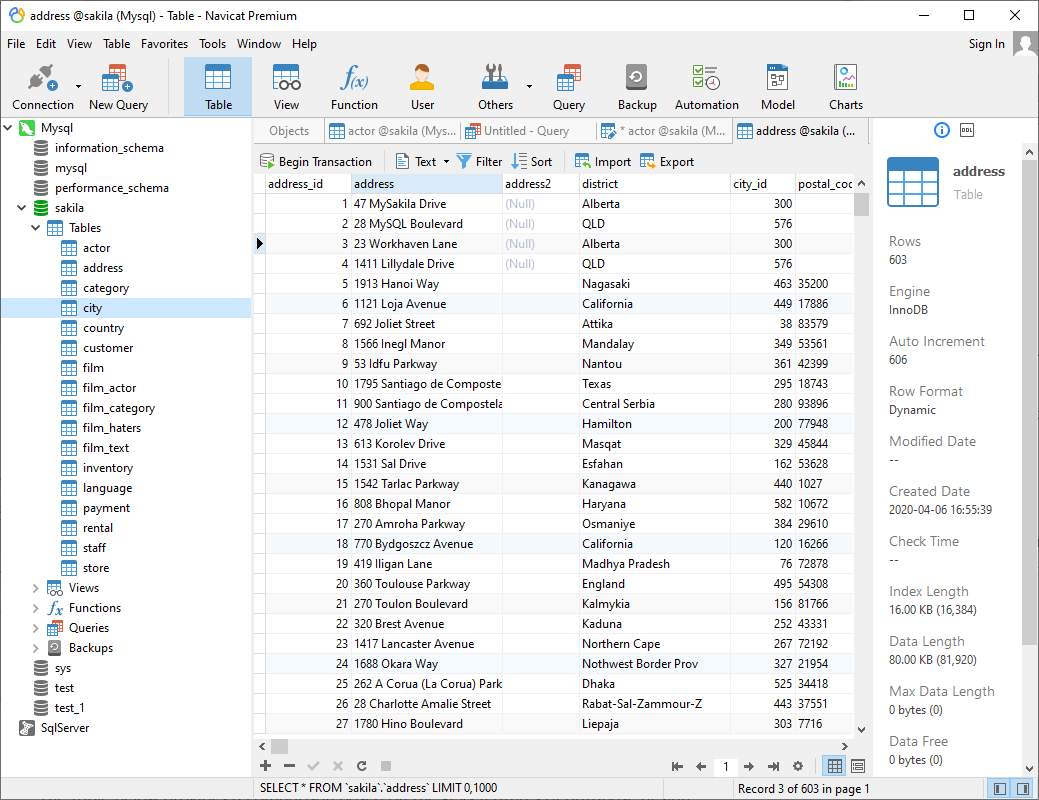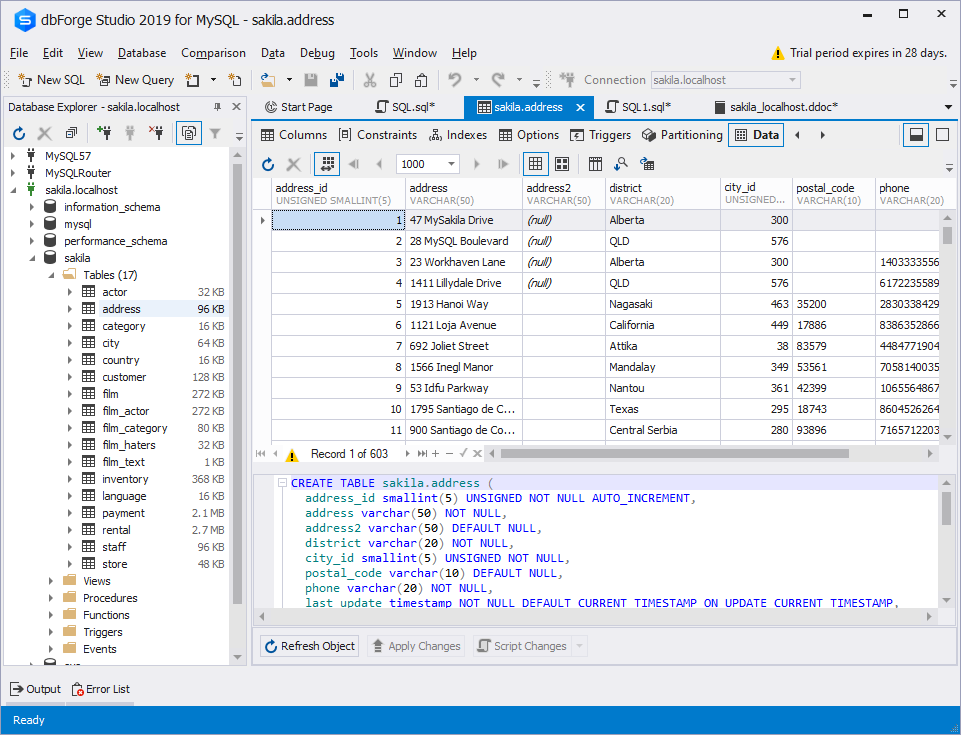
DbSchema vs Navicat, DbForge
In this article, we are going to have a quick look at 3 tools for database modeling: Navicat, DbForge & DbSchema. We are going to have an overview of each tool, go through the main features, strengths & weaknesses for each of them.
First of all, each business has its own requirements from a tool. When it comes to database design & management, each tool has its own strengths & weaknesses. Some are focused on a more technical approach while others on the visual part. The visual & interactive part of a database modeling tool is an emerging requirement in the market nowadays. Mostly because it cuts the time spent on writing complex queries.
Tools Overview
DbSchema is a visual database design tool. The users can perform CRUD operations, create foreign keys or edit any object from the database by interacting with the diagram. It can connect to any SQL, NoSQL or Cloud database with JDBC drivers that automatically download when the connection is selected. The tool uses model files that make it possible to work on the schema without database connection (offline). The model file can be shared in a team using GIT or any other versioning system.

Navicat is one of the most used database modeling tools on the market. It offers many good features and stable integrations with the supported databases. The tool offers great features for data and structure synchronization. Navicat integrates a good reporting engine and is a great tool for observing data & insights about databases.

DbForge is a data modeling tool for MySQL, SQL Server, Oracle, and PostgreSQL databases. The tool has different licenses for each of the databases. There is a DbForge for MySQL, DbForge for SQL Server and so on. The interface is explorer-like and pretty straightforward. On the management side, DbForge can perform data migration, performance analysis, and access controls & permissions. It’s also a good tool for backup & recovery.

Features Comparison
The table below provides a comparison based on the keys features of database design.
| Features | DbSchema | DbForge | Navicat |
|---|---|---|---|
| Interface | Clean & intuitive interface with interactive diagrams | Explorer-like interface not very intuitive, no interactive diagrams | Clean interface, no interactive diagrams |
| Connectivity | A single tool that can connect to any SQL, NoSQL & Cloud Database | Can connect to popular relational databases like MySQL, Oracle, SQL Server, PostgreSQL, MariaDb | Can connect to popular databases like SQL Server, PostgreSQL, Oracle and some cloud databases |
| Ease of Installation & Connection | Easy to install & use. Automatically download drivers for any database | Easy to install, straightforward connection wizard | Easy to install, integrated drivers for popular databases |
| Reverse Engineer the Schema | Can reverse engineer the schema & create interactive diagrams. Feature compatible with MongoDb | Can reverse engineer database objects | Can reverse engineer database objects |
| SQL Knowledge | Minimal Recommended for more complex tasks | Medium experience with SQL Language is required | Medium experience with SQL Language is required |
| Solution for editing SQL syntax | SQL Editor with autocompletion. Supports Groovy & Java Scripts | SQL Editor with autocompletion & code snippets | SQL Editor with autocompletion |
| Visual Queries | Yes | Yes | Yes |
| Feature for relational data browsing | Yes Relational Data Editor | No | No |
| Import Data | Can Import from TXT, XML, Excel (.xls, .xlsx) | Can import data from TXT, XML, Excel, CSV, DBF | Can import data from TXT, XML, Excel, CSV, DBF |
| Schema Comparison | Yes With the database and with other schemas | Yes | Yes With the database and with other schemas |
| Data Generator | Can gerenate custom, random or reverse regular expression | Can generate random data | No |
| Reports | Yes | Yes | Yes + Charts |
| Documentation | Can export interactive HTML5 or PDF Documentation | Can export HTML, PDF or Markdown | No |
Strengths & Weaknesses
| Tool | Strenghts | Weaknesses |
|---|---|---|
| DbSchema | * All in one tool at the best price * Compatible with all databases * Very intuitive interface (can interact with diagrams) | * Emerging tool with a growing community * Feature set still evolving |
| DbForge | * Great database manager * Good SQL Editor * Works good with large SQL files | * Only for Windows * Supports only relational databases * For some databases the user has to buy different licenses |
| Navicat | * Good import/export options * Stable report builder * Good data & structure synchronization | * Expensive license * Documentation is not complete as there are many versions of the product |
Price
| DbSchema | DbForge | Navicat | |
|---|---|---|---|
| Starting Price | $196, one-time, Personal License | $249.95, one-time, per user | Subscription $29.99/ month or $299.99/ year (non-commercial) |
Conclusion
There is no tool that can do everything perfect, that's why db managers and developers should take serious time for research based on their needs. On one hand, if you want a more visual approach to your database management, with interactive diagrams and seamless Visual Queries, you should go with DbSchema. On the other hand, if you want a more technical approach and write complex queries manually, you may consider one of the other two modeling tools, DbForge or DbVisualizer.




